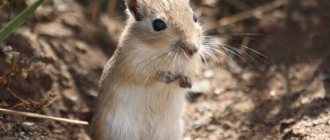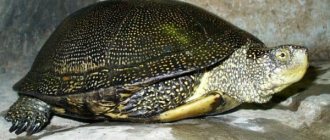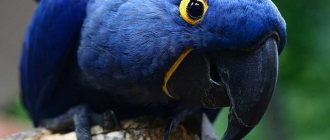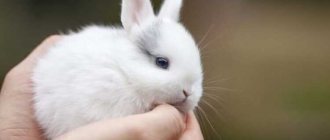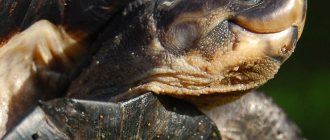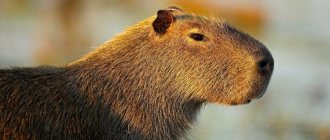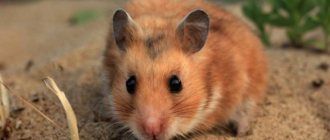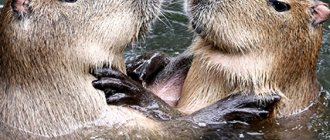Many people are interested in turtles due to the uniqueness of their way of life. One of the varieties of these reptiles is the marsh turtle. This is a wild animal, but if certain conditions are met, it can be made a true friend. It is important to understand what living conditions are optimal for it in the wild - this will help to understand the needs of the animal and ensure their satisfaction.
Appearance of a marsh turtle
Externally it is easy to distinguish from other species. A characteristic feature is the dark color. In the photo of a marsh turtle, yellow spots are clearly visible that cover the entire skin of the turtle. In some turtles they also cover the shell.
The shell is smooth, round, black or brown. The main difference between females and males is eye color. Females have yellow eyes, while males have a shade of red. Strong webbed paws equipped with long claws.
As an adult, the turtle grows to 30-35 cm. Weight is about 1.5-2 kg. The tail, which performs the function of control in water, reaches a length of 12 cm; in females, as a rule, it is slightly shorter. Vision and sense of smell are well developed.
Literature
- Ananyeva N. B., Orlov N. L., Khalikov R. G., Darevsky I. S., Ryabov S. A., Barabanov A. V.
Atlas of reptiles of Northern Eurasia (taxonomic diversity, geographic distribution and conservation status). - St. Petersburg: Zoological Institute of the Russian Academy of Sciences, 2004. - P. 21. - 1000 copies. — ISBN 5-98092-007-2. - Bannikov A. G., Darevsky I. S., Ishchenko V. G., Rustamov A. K., Shcherbak N. N.
Key to amphibians and reptiles of the fauna of the USSR. Textbook manual for students of biology. specialties ped. institutions. - M.: Education, 1977 - P. 73-74. - Gurzhiy A. N.
Aquarium and land turtles. - M.: Delta-M, 1999. P. 74-78. - Zavyalov E.V., Tabachishin V.G., Shlyakhtin G.V.
Modern distribution of reptiles in the north of the Lower Volga region. modern herpetology. 2003. Volume 2. pp. 52-67. - Kurylenko B.G., Verves Yu.G.
Amphibians and lycopes of the fauna of Ukraine: Dovidnik-Viznachnik (Navch. pp.) - K.: Geneza, 1998. - P. 115-119. - Makhlin M. D.
Turtles at your home. - M.: Delta-M, 2000. - P. 35-39. - Orlova V.F., Semenov D.V.
Nature of Russia. Life of animals. Amphibians and reptiles. - M.: "LLC Firm "AST Publishing House", 1999. - P. 131-134. - Pupins M.F., Pupinya A.
Experiences and problems of zooculture of the endangered species in Latvia
Emys orbicularis
L. / Zooculture and biological resources. Materials of the scientific and practical conference. Moscow: T-vo scientific publications KMK. 2005. - Ruchin, A. B., Ryzhov M. K.
Red Book of the Republic of Mordovia: amphibians and reptiles // Natural heritage of Russia: study, monitoring, protection. Mat. intl. scientific conf. Tolyatti 2004. p. 232—233 - Ryzhov M.K.
Finds of a marsh turtle in the Republic of Mordovia // Current problems of herpetology and toxicology. Sat. scientific works Vol. 9. Tolyatti 2006. pp. 159-164. - Life of animals in 7 volumes / Ch. editor V. E. Sokolov.
T. 5. Amphibians and reptiles.
/ A. G. Bannikov, I. S. Darevsky, M. N. Denisova
, etc.;
edited by A. G. Bannikova
- 2nd ed., revised. - M.: Education, 1985. - P. 134-136. - Dinçer Ayaz, Uwe Fritz, Mehmet Kutsay Atatur, Ahmet Mermer, Kerim Cicek, and Murat Aafsar
.
Aspect of Population Structure of the European Pond Turtle ( Emys orbicularis
) in Lake Yayla, Western Anatolia, Turkey. Journal of Herpetology, Vol. 42, No. 3, pp. 518—522, 2008 - G. F. Ficetola, E. Padoa-Schioppa, A. Monti, R. Massa, F. De Bernardi and L. Bottoni
.
The importance of aquatic and terrestrial habitat for the European pond turtle ( Emys orbicularis
): implications for conservation planning and management. Can. J Zool. 82: 1704–1712 (2004). - MAL Zufi, A. Celani, E. Foschi & S. Tripepi
.
Reproductive strategies and body shape in the European pond turtle ( Emys orbicularis
) from contrasting habitats in Italy. Journal of Zoology 271 (2007) 218–224 - M. L. Zuffi, F. Odetti and P. Meozzi
.
Body size and clutch size in the European pond turtle ( Emys orbicularis
) from central Italy. J. Zool., Lond. (1999) 247, 139–143 - P. Lenk, U. Fritz, U. Joger and M. Wink
.
Mitochondrial phylogeography of the European pond turtle, Emys orbicularis
(Linnaeus 1758). Molecular Ecology (1999) 8, 1911–1922 - Slawomir Mitrus
.
Spatial distribution of nests of the European pond turtle, Emys orbicularis
(Reptilia: Testudines: Emydidae), from long-term studies in central Poland. Zoologische Abhandlungen (Dresden) 55, 2006: 95—102 - Uwe Fritz, Tiziano Fattizzo, Daniela Guicking, Sandro Tripepi, Maria Grazia Pennisi, Peter Lenk, Ulrich Joger & Michael Wink
. A new cryptic species of pond turtle from southern Italy, the hottest spot in the range of the genus Emys (Reptilia, Testudines, Emydidae). Zoologica Scripta, Volume 34, Number 4, July 2005, pp. 351—371
Swamp turtle behavior
European marsh turtles thrive both in water and on land. They prefer to spend the day outdoors, basking in the sun's rays. Even if the weather is cloudy, turtles look for a warm place on the ground. They spend the night at the bottom of nearby bodies of water. This is where they hide from danger.
They can spend up to 2 days underwater, periodically rising to the surface to fill with oxygen. Swamp turtles are quite agile and can move quickly on land and water.
When winter begins, they go into hibernation, which lasts approximately 6 months, from November to April.
Belgorod turtle named Natasha. Why are redfish dangerous in our nature?
Today, May 23, is World Turtle Day. This reptile has long ceased to be an exotic animal and has found its niche as a pet along with hamsters, parrots and aquarium fish.
But can turtles be compared to, for example, kittens or puppies? Why do people keep reptiles, and how does this hobby most often end? Anastasia Gladkova , a research assistant at the Belogorye State Nature Reserve .
European in the middle zone
– Nastya, let’s start our conversation with the fact that in Belgorod social networks you can find many posts marked “Belgorod turtles”, “turtles on Vezelka”. And our readers began sending to the editor photographs of tortillas basking in a pond, taken in different areas of the region. Let's figure out what kind of turtles we have.
– The European marsh turtle lives in the Belgorod region. In spring, animals come out of hibernation and can be seen basking in the sun near bodies of water or on logs floating in the water.
-What kind of animal is this?
– The size of the turtle is small – up to 23 centimeters. It is colored dark olive or brown-brown. The head, legs and tail are dotted with yellow dots of varying sizes. There are also yellow dots or lines on the shell. The aquatic lifestyle determines the streamlined shape of the shell. Males and females can be distinguished by their long tail and concave plastron. By the way, the plastron is the lower part of the shell. This type of turtle swims and dives well. It is not easy to see it in nature. At the slightest danger, she tries to slip into the water. They begin wintering around October.
– Does the swamp inhabitant harm nature?
– At one time it was really considered a pest of fisheries. They fought with the turtle for a very long time, so much so that later this species had to be protected. But observation of the animal’s life refuted this opinion. Attempts by a marsh turtle to keep up with healthy fish are usually unsuccessful.
– What do they eat then?
– The diet of the swamp turtle consists of invertebrates, mainly beetles, woodlice, nodule, mollusks, frogs and their tadpoles, dead, sick fish, and rarely aquatic plants. It has been proven that in a natural reservoir its role is rather sanitary. Today, the European marsh turtle is included in the list of species of plants, lichens, fungi and animals that require increased protection measures - candidates for inclusion in the Red Book of the Belgorod Region.
– What does this have to do with?
– First of all, with the destruction of biotopes and places suitable for laying eggs. The nests are destroyed by dogs, foxes and people. This animal’s closest relative, the red-eared turtle, also poses a threat. It is easily identified by the red spots on the sides of its head. Research has shown that red shins are displacing native species from warming zones. And an unheated reptile cannot live fully.
“She’s better there!”
“We don’t have red-eared turtles.”
- But they are sold in pet stores. The homeland of these beauties is North America. They end up in water bodies thanks to irresponsible citizens who keep red-eared turtles as pets or as toys for children, and then realize that they cannot cope with the animal. The turtle may bite the baby, or he will get tired of communicating with it. Can you imagine how often household members step on an animal crawling around the apartment? While playing, he may be bitten by a dog or cat, and the draft will cause the poor fellow to develop pneumonia. In the fall, when the heating has not yet been turned on, the reptile simply catches a cold. Adults can’t find anything better than releasing the red ear into the nearest body of water, while convincing themselves and those around them that they are giving it freedom, and “it’s better there.”
- Isn’t that so?
- Of course not. This is a heat-loving species; the northern border of the red ear's range runs through the state of Virginia, where there is a shift in climate from temperate to subtropical. To live in nature, a turtle needs more comfortable conditions than those found in our region. So, when releasing an adult animal into a pond or river in the summer, a person must be aware that most likely it will only survive until winter. Our frosts will kill her.
– You probably shouldn’t buy your baby a turtle as a pet. There are more familiar pets.
– I am sure that keeping the same turtle requires not only love on the part of the owner, but also knowledge of the ecology, biology and physiology of this species. Accordingly, in order to keep an animal properly, to provide it with a spacious aquaterrarium with water filtration, a place for basking, and an ultraviolet lamp, you also need to spend a lot of money.
– Basking – what is it?
– This is the place where your turtle sunbathes every day under ultraviolet lamps and heating devices. As you know, reptiles can increase their body temperature if the appropriate conditions are created. It is for these purposes that they crawl out of the water in the summer and sit on snags, enjoying the warm days. If a child is really interested in nature, then, as a rule, he loves all animals and studies the conditions in which they are kept. On the one hand, he learns about natural processes, on the other, he learns to treat living creatures responsibly. He will be incredibly interested in watching the life of his pet, and the thought of getting rid of the animal will never occur to him.
Invasive red ear
– Nastya, releasing an animal into a reservoir is dangerous not only because it will die?
- Certainly. The red-eared slider is an invasive species. It is included in the list of the hundred most dangerous invasive species, which was compiled by a group of specialists from the International Union for Conservation of Nature.
- What does it mean?
– These are species of living organisms brought from other parts of the Earth to places where they had not lived before, and which begin to actively take root in new territories, displacing the indigenous inhabitants. In world practice, there are cases where imported species destroyed representatives of local fauna and flora. In the Belgorod region, striking examples are the American mink, which replaced the European mink; ash-leaved maple, which has invaded the native vegetation cover. Such species threaten local biodiversity.
– What was the manifestation of the aggressive attack of the red-eared turtle?
– Today, thanks to such “lovers” of nature all over the world, the red-eared turtle has spread across a number of US states, ending up in the waters of Australia, Israel, Germany, Spain, France, Italy, Poland and the Baltic countries. There is evidence of encounters of such turtles in the reservoirs of Moscow, the Leningrad region, the Stavropol Territory, Dagestan, and the Far East. Little Reds are seen in the neighboring Voronezh region and here. The issue of the distribution of the red-eared turtle in our country is being dealt with by specialists from the Severtsov Institute of Ecology and Evolution of the Russian Academy of Sciences.
– If an animal most likely will not survive in nature, why should it be studied?
– The red-eared turtle has features that allow it to establish itself in new habitats and compete with native species. This is omnivorousness, fertility, the ability to live in anaerobic conditions, that is, in the absence of oxygen, at temperatures up to +3°C for three months. And even if the red-eared reptile does not survive the winter, it is able to ruin the existence of the marsh turtle. Also, North American female relatives, especially those kept in poor conditions, can be carriers of infections.
Source
Lifespan of a marsh turtle
Like other species, the marsh turtle is considered a long-liver. However, there is no exact figure for how many years they live. On average, in the wild, individuals live from 30 to 50 years. There is data that proves a life expectancy of up to 100 years.
In captivity, under good conditions, a marsh turtle can live 25-30 years.
Kaluga region
Bird Park "Sparrows" (Kaluga region)
Species: pig-necked turtle, red-eared turtle, spurback turtle, Amboin turtle
Address: Kaluga region, Zhukovsky district, Village of State Farm "Pobeda" Tel.: 8 (48439) 934 26 Website: www.birdspark.ru
Sadovy (Moscow region)
Species (23): Indochinese Box, Indian Lobate, Cross-breasted, Snake-necked, Decorated Box, Cayman, Common Musk, Bighead, Matamata, Vulture, Two-clawed, Radiant, Charcoal, Spurneck, Leopard, Splendid Forest, Vietnamese Keeled, Carolina, Spiny, Red-bellied short-necked, red-eared, swamp, Chinese trionix
Address: Moscow region, Dolgoprudny st. Vinogradnaya 9R (5 km from the Moscow Ring Road along Dmitrovskoe Highway) Website: https://redniva.ru/
Swamp turtle habitat
Swamp turtles are not very picky about climatic conditions. The reptile inhabits forests, steppes, and even mountain surfaces located near water. These may be swamps, streams, lakes or ponds.
Found in northern Africa and southern European countries. It lives in the Middle East, in the Caucasus region. Some subspecies have been seen in Kazakhstan and Turkmenistan.
Habitat where he lives
The marsh turtle is common in Russia, Ukraine, the Caucasus, Europe, Central Asia, and northwest Africa. It has a fairly wide habitat.
Lives in forest, steppe or forest-steppe areas. Lives in various fresh water bodies: swamps, ponds, lakes, slow-flowing rivers, canals. The water must be warm.
They prefer to settle close to the shore so that they can periodically crawl onto land to bask in the sun.
Diet of a marsh turtle in the wild
Swamp turtles are excellent hunters. They are able to track prey on land; they hunt less often in water. On the shore they usually feed on insects, their larvae, worms or mice; in order to swallow the caught prey, the turtle needs to dive into a body of water.
It swallows food completely; if it turns out to be too large, it tears it into smaller pieces with the claws of its front paws.
In the water it feeds on mollusks and various snails; fish is rarely caught. In the diet of a marsh turtle, plant foods are present in small quantities to maintain the balance of microelements in the body. Usually it's algae.
Tula region
Exotarium (Tula) Species: Chinese trionix, Seychelles tortoise, matamata, vulture, marsh, spurred, radiant tortoise. Address: Oktyabrskaya st., 26 Telephone Website: https://www.tulazoo.ru/
Marsh turtle breeding
The mating season for marsh turtles begins immediately after hibernation ends in the spring. After 2 months, the female digs a small hole on the shore of the reservoir in which she lays eggs.
At one time, a turtle can bring up to 20 pieces. Young black swamp turtles hatch after 3 months, closer to autumn. Their weight is only 5 g. During the first winter they usually remain in a hole, trying to burrow deeper into the ground, while their parents spend the winter in water.
In the lower part of the body, turtles have a special bile sac that prevents them from starving throughout the winter.
Kostroma region
Petting Zoo (Kostroma)
Species: Mediterranean tortoise, red-footed tortoise, snake-necked tortoise, big-headed tortoise, two-clawed tortoise, swamp tortoise, Chinese trionix, black swamp tortoise, leopard tortoise, spur-necked tortoise, Central Asian tortoise, elastic tortoise, matamata
Address: st. Molochnaya Gora, 3 Museum of Nature 3rd floor Website: https://vk.com/kontzoo
Rules for keeping a marsh turtle at home
It is quite possible to care for a domestic marsh turtle, observing certain conditions of detention.
Aquarium. To maintain life, a turtle needs a container with a volume of at least 100 liters. An ultraviolet lamp is required. The bog turtle loves warmth. Water depth – up to 20 cm.
The presence of land in the aquarium so that the turtle can spend time not only in water. A rocky surface is best; sand can harm your pet.
A filter is necessary to clean the water from pieces of food that may remain after feeding. The absence of a filter means changing the water every week.
It is best to transfer your pet to a separate container with water during feeding.
For a turtle to live comfortably, it is necessary to maintain a warm climate in the room.
It is necessary to have a dark corner in the aquarium so that the turtle has a place to recuperate.
To maintain your home, it is better to buy a small turtle in specialized stores. If the turtle previously lived independently in nature, then it will be extremely difficult for it to adapt to the conditions of captivity.
The bog turtle is endowed with intelligence, so it reacts quickly to the appearance of its owner, ready to eat. It is dangerous that other inhabitants will move into the aquarium with the turtle; it will destroy small fish, and will aggressively defend the territory from its relatives. This behavior is especially common among males.
What does the red-eared slider eat?
Photo: Red-eared turtle boy
The red-eared slider has an omnivorous diet. They need abundant aquatic vegetation, as this is the main food of adults. Turtles do not have teeth, but instead have jagged and sharp horny ridges on their upper and lower jaws.
The animal's menu includes:
- aquatic insects;
- worms;
- crickets;
- snails;
- small fish,
- frog eggs,
- tadpoles,
- water snakes,
- various algae.
Adults tend to be more herbivorous than juveniles. When young, the red-eared turtle is a predator, feeding on insects, worms, tadpoles, small fish and even carrion. Adults are more inclined to a vegetarian diet, but do not refuse meat if they can get it.
Interesting fact! Sex in turtles is determined during the embryogenesis phase and depends on the incubation temperature. These reptiles lack sex chromosomes that determine sex. Eggs that are incubated at 22 - 27°C become only males, and eggs that are incubated at higher temperatures become females.
These reptiles are highly adaptable to their environment and can adapt to anything from brackish waters to man-made canals and urban ponds. The red-eared slider can wander away from water and survive cold winters. Once available habitat is found, the species quickly colonizes the new area.
Diet for marsh turtles
Some individuals are aggressive, so experts recommend using tweezers for feeding to avoid bites. The turtle's mouth is equipped with sharp, powerful teeth.
To avoid overeating, adult turtles should be fed every three days; small turtles should be fed every day.
The question of what to feed a marsh turtle is not difficult to solve. To maintain health, the diet should be dominated by food of animal origin, with a small addition of vegetation. You can also purchase special food that already contains all the necessary vitamins balanced.
Your pet's favorite treats will be raw fish, squid, and earthworms. It is possible to feed the turtle chicken hearts or pieces of beef liver. To sometimes pamper an aquarium resident, you can give some small shrimp.
From plant foods, the turtle will like fresh lettuce or cabbage.
Natural enemies of the red-eared slider
Photo: Adult red-eared turtle
Due to its size, bite and thickness of shell, an adult red-eared turtle should not be afraid of predators, of course, unless there are alligators or crocodiles nearby. She can retract her head and limbs into her shell when threatened. In addition, red whales monitor predators and seek refuge in the water at the first sign of danger.
However, this does not apply to juveniles, which are preyed upon by a variety of predators, including:
- raccoons;
- skunks;
- foxes;
- wading birds;
- storks.
Raccoon, skunk and fox also steal eggs from this turtle species. Juveniles have unusual defenses against predatory fish. When swallowed whole, they hold their breath and chew the mucous membrane inside the fish until the fish regurgitates them. The bright colors of small predators warn large fish to avoid them.
In their home range, red-eared turtles occupy an important ecological niche both as food and as a predator. Outside their habitats, they fill the same types of niches and become an important food source for predators in urban and suburban areas.
Due to their adaptability, red-eared turtles are the predominant turtle species in urban environments. Most parks in many cities in the United States have thriving colonies of red-eared turtles for people to enjoy.
Photo of a swamp turtle
Determine gender and age
How to determine the sex of a turtle? It is defined quite simply. There are several ways:
- It is worth carefully examining the type of plastron - the lower region of the shell. In females this part has a smooth structure without indentations, in males it is concave;
- There are also differences in the iris of the eyes. In females it is yellow, it has symmetrical triangles with a black tint, in males it has a brown or dirty yellow tint and has no pattern;
- To determine this, you can use the type of tail shape. In females, the tail is thin, with the anus located near the shell; in males, it is thick, and the anus area is 2-3 cm from the edge of the shell.
How to determine the age of marsh turtles? It is identified by the number of rings. The first ring on the shell appears at 3-5 months, but only after two years of life can it be equated to 1 year. It follows from this that if a turtle has 5-6 rings, then it is 2-3 years old. But how long a reptile can live at home, it all depends on care. She lives up to a certain age, but we can definitely say that these animals are long-lived, their age can reach up to a hundred or even more years.
If you are planning to keep a European marsh turtle at home, then first study its characteristics and description. You definitely need to know her living conditions, nutrition, care of the aquarium and the rules for its organization. It is important to create all the necessary conditions so that this amphibian feels comfortable.
